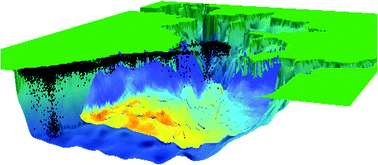Investigations into the transport and pathways of scallop larvae—the use of numerical models for managing fish stocks†
Abstract
The scallop fisheries off the southeast coast of Ireland have historically been considered a valuable resource for coastal communities, and hence their management is important. The scallop fishing grounds consist of a number of scallop beds dispersed throughout the St George’s Channel and the southern Irish Sea. The boundaries between stocks and the interconnection in populations of adult scallops, through larval transport, is generally unknown. Until the time of this research, the stocks of scallop in this region had not been assessed. A research project was undertaken to develop novel, spatially explicit and multi-disciplinary approaches to the assessment of the scallop fisheries in the region. The project supported research in three related areas under the broad objective of developing stock assessment protocols and methods in order to promote sustainable management of these fisheries. One of these areas was the development and application of numerical models. The objectives of this modelling research were: (a) to reconstruct the physical environment of the study area; (b) investigate how this environment affects the demographics and nature of scallop; and (c) determine migration–transport pathways of the scallop larvae. From these investigations, light is shed on how the spatial variability in certain parameters of the natural environment determine habitats and the scallop populations. Also, the investigations now enable determinations to be made on the interconnectivities of ‘disparate’ scallop beds and where larvae are, in general, likely to be found. Thus, through the use of complex computer models, important clues are deduced that enable us to now understand key behavioural components of scallop larvae and their transport pathways. The analysis of these clues is assisting the development of protocols for managing the fish stock in a sustainable manner.


 Please wait while we load your content...
Please wait while we load your content...